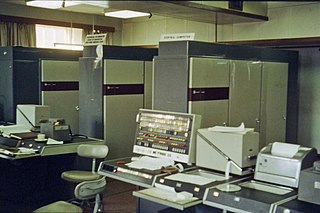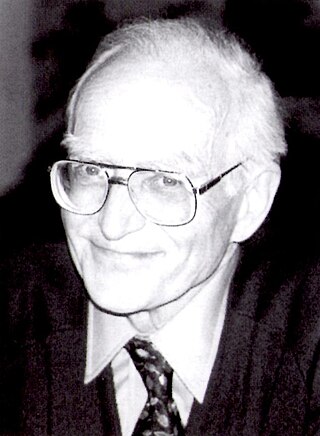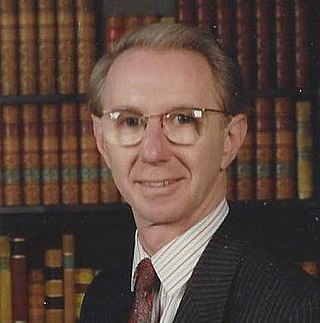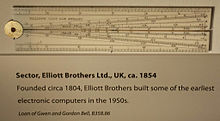Elliott ALGOL is a compiler for the programming language ALGOL 60, for the Elliott 803 computer made by Elliott Brothers in the United Kingdom. It was implemented by Tony Hoare and others. It differed slightly from the reference version of ALGOL, particularly in the supported character set. First released in February 1962, it is believed to be the first implementation of an ALGOL 60 compiler in a commercial context and was an unexpectedly popular product for the company.
The Marconi Company was a British telecommunications and engineering company that did business under that name from 1963 to 1987. Its roots were in the Wireless Telegraph & Signal Company founded by Italian inventor Guglielmo Marconi in 1897, which underwent several changes in name after mergers and acquisitions. The company was a pioneer of wireless long distance communication and mass media broadcasting, eventually becoming one of the UK's most successful manufacturing companies. In 1999, its defence equipment manufacturing division, Marconi Electronic Systems, merged with British Aerospace (BAe) to form BAE Systems. In 2006, financial difficulties led to the collapse of the remaining company, with the bulk of the business acquired by the Swedish telecommunications company, Ericsson.

Pegasus was an early British vacuum-tube (valve) computer built by Ferranti, Ltd that pioneered design features to make life easier for both engineers and programmers. Originally it was named the Ferranti Package Computer as its hardware design followed that of the Elliott 401 with modular plug-in packages. Much of the development was the product of three men: W. S. (Bill) Elliott (hardware); Christopher Strachey (software) and Bernard Swann. It was Ferranti's most popular valve computer with 38 being sold. The first Pegasus was delivered in 1956 and the last was delivered in 1959. Ferranti received funding for the development from the National Research Development Corporation (NRDC).

International Computers and Tabulators or ICT was a British computer manufacturer, formed in 1959 by a merger of the British Tabulating Machine Company (BTM) and Powers-Samas. In 1963 it acquired the business computer divisions of Ferranti. It exported computers to many countries and in 1968 became part of International Computers Limited (ICL).

The Elliott 803 is a small, medium-speed transistor digital computer which was manufactured by the British company Elliott Brothers in the 1960s. About 211 were built.
Neil Ernest Wiseman was a British computer scientist. Wiseman's pioneering research in computer graphics began in 1965, and resulted in a number of inventions and patents. These included a pen-following screen menu, which anticipated the pop-up menu, and one of the first systems for distributed Computer Graphics. His work brought him three patents, over 70 research publications, and more than 40 students who gained PhDs. In 1986 the Computer Laboratory appointed him to a personal Readership in computer graphics.

The Atlas Computer was one of the world's first supercomputers, in use from 1962 to 1972. Atlas' capacity promoted the saying that when it went offline, half of the United Kingdom's computer capacity was lost. It is notable for being the first machine with virtual memory using paging techniques; this approach quickly spread, and is now ubiquitous.
The National Research Development Corporation (NRDC) was a non-departmental government body established by the British Government to transfer technology from the public sector to the private sector.

GEC Computers Limited was a British computer manufacturing company under the GEC holding company from 1968 until the 1990s.

The EMIDEC 1100 computer was produced by the Computing Services Division of EMI Laboratories in the UK under the leadership of Godfrey Hounsfield in 1958, after one year's development. It used magnetic core memory and transistor technologies and it is claimed to be the first large commercial transistorised machine in the UK.
The Queen's Award for Enterprise: Innovation (Technology) (1988) was awarded on 21 April 1988, by Queen Elizabeth II.

Dina St Johnston was a British computer programmer credited with founding the UK's first software house in 1959.
The Comprehensive Display System (CDS) was a command, control, and coordination system of the British Royal Navy (RN) that worked with the detection/search Type 984 radar. The system was installed on a total of six ships starting in 1957. The US Navy purchased a prototype CDS and produced twenty of their own version, the Electronic Data System (EDS). These were used on a number of ships until 1968. A modified version, the Data Handling System, was used with the AMES Type 82 radar by the Royal Air Force, and US Air Force very nearly used it as well.

George Eric Felton was a British computer scientist. He undertook pioneering work in the field of operating systems and programming software and is the father of the GEORGE Operating System. He held the world record for the computation of π.
The Elliott 503 was a transistorized computer introduced by Elliott Brothers in 1963. It was software-compatible with the earlier Elliott 803 but was about 70 times faster and a more powerful machine. About 32 units were sold. The basic configuration had 8192 words of 39 bits each for main memory, and operated at a system clock speed of 6.7 megahertz. It weighed more than 4,050 pounds.
John Flavell Coales CBE, FRS was a British physicist and engineer. He started the Borehamwood laboratory of the Elliott Brothers company in 1946.
The Elliot 152 was a vacuum tube fixed-program computer developed for naval gunnery control at the Elliott Brothers laboratory in Borehamwood, England. It was an early example of a digital real-time computer system, and the first computer produced by Elliott Brothers. The first and only unit was made operational in 1950.
Bobby Hersom is a British mathematician and computer scientist known for her early work on computers at Elliott Brothers, Hatfield Polytechnic, and the Rothamstead Agricultural Research Station.

David John Pentecost is a British composer, videographer, writer, a retired information technology specialist, and a retired British computer industry history researcher. He is a Certified Information Technology Professional, a Life Member and Chartered Fellow of the British Computer Society, and also a Member of the Computer Conservation Society.













